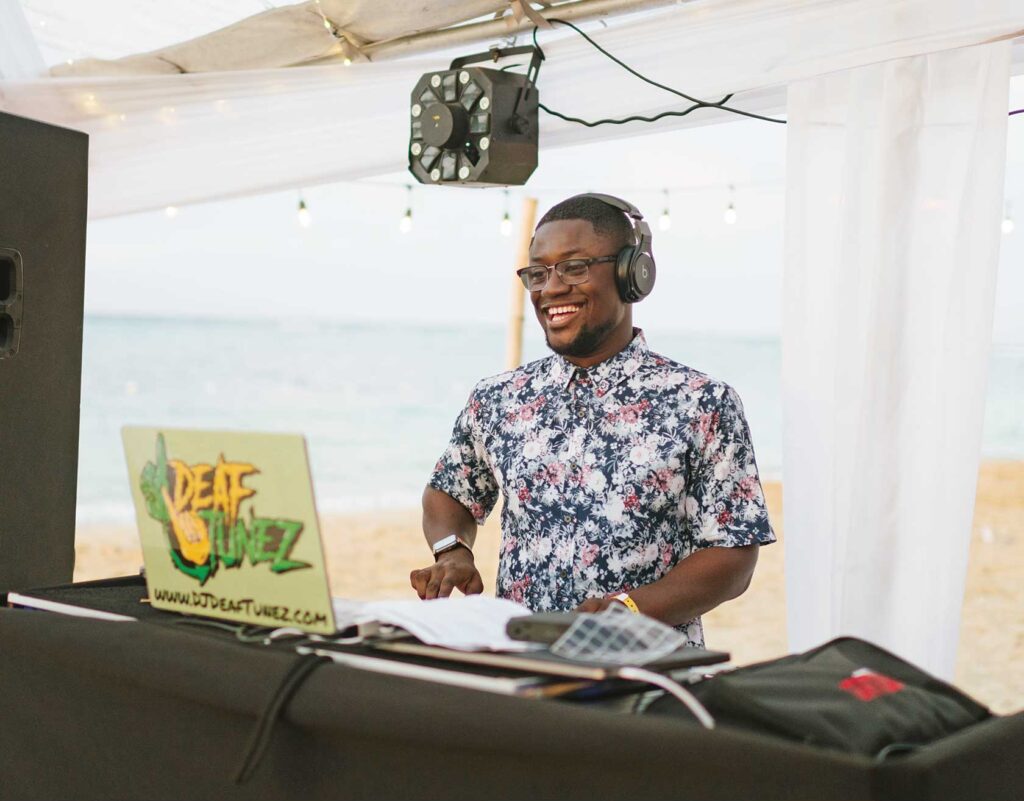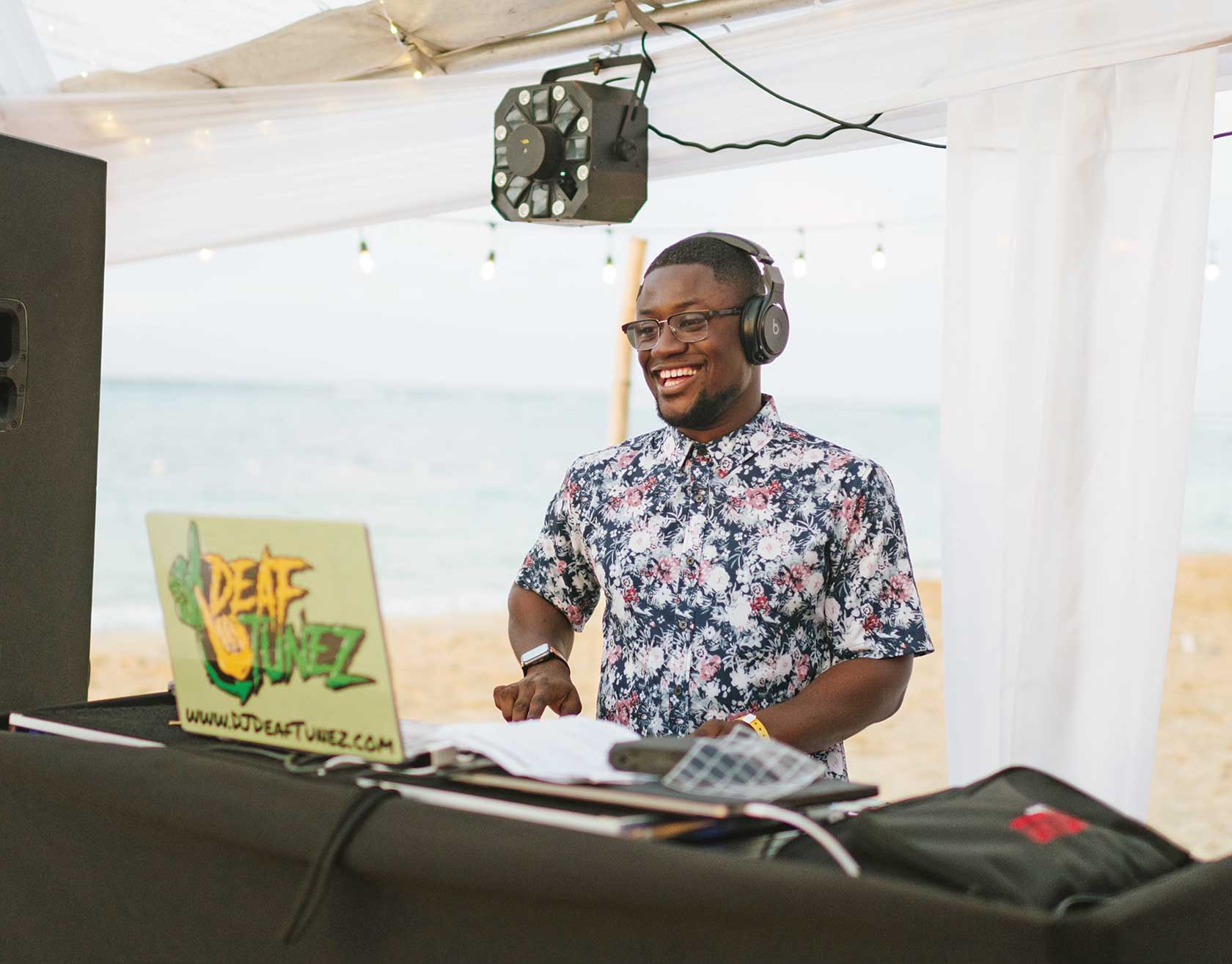
Andre Robinson, also known as DJ Deaf Tunez, was inspired to pursue a career in music by two deaf DJs. Photo: Yuri Weissgandt
Banner Arts & Culture Courtesy of Cruise Company
At family gatherings, Andre Robinson would watch his cousin take on the role of DJ, standing behind the table and putting the needle on the records. Robinson began losing his hearing around age 3, but the music playing at the gatherings was always loud enough for him to hear. He was fascinated by music, but wasn’t sure if his hearing loss would allow him to pursue it.
A few years later, the Boston native traveled to New York where he was introduced to two deaf DJs, DJ Hear No Evil and DJ Nico. These two artists made Robinson feel like his dream was within reach, so he started DJing at college parties, invested in his own equipment and soon launched his career as DJ Deaf Tunez.
He used social media to get out there and promote his work as a deaf DJ and comedian. His artistry caught the attention of the Science Museum, which contacted Robinson to be a part of their Disability Pride Month program. When he got the invitation, he could hardly believe it.
“This is a big thing for me because I grew up here in the Boston area and an opportunity like this; [could happen] “The deaf community is stepping up,” he said.
Robinson is one of a handful of deaf and hard of hearing people who have shared their stories at museum programs leading up to and during Disability Pride Month.
This year, the museum is piloting the ASL Sundays program, hosting one each Sunday in May and June, with the final one scheduled for July 14. The program, in which the museum provides American Sign Language interpretation for select shows, is the brainchild of Sylvie Rosenkart, the museum’s accessibility coordinator, who wanted to increase programming for the disability community and foster a sense of belonging.

Visitors to the Science Museum experience a new permanent exhibit on hearing loss. Photo: Ashley McCabe
“We’re really focusing on the deaf and hard of hearing community this year because we have an expo on hearing loss,” Rosenkart says, “so we’re getting the opportunity to do some really meaningful collaborations with people of experience and get even more involved in that community.”
The exhibit Rosenkart was referring to debuted in June in the Human Life Hall section of the museum, walking past containers of live animals and displays on healthy eating. The permanent exhibit walks visitors through different aspects of hearing loss in a series of four interactive exercises, including how hearing loss occurs, techniques used to manage hearing loss, ways to communicate with deaf and hard of hearing people and hearing safety.
Just off the exhibit grounds is a small theater where, with the click of a button, visitors can watch a short animated video highlighting the experience of one of four deaf people. In one stylized video in red, Jonathan Ozek talks about the isolation he felt because of his hearing loss during a middle school field trip.
“This is a message to help people understand more about what it’s like to be deaf or hard of hearing,” Ozek said of the video, “so that the next time they interact with someone like me, they can learn from the experience of being here.”
For the ASL and hearing loss program, Robinson (DJ Deaf Tunez) worked with the museum’s digital team to create a mini-documentary about his life with hearing loss. The goal of the video, which will premiere ahead of this month’s ASL Sunday event, is to show that “deaf and hard of hearing people are people, too,” Robinson said.
Robinson said he hopes the museum’s work will raise awareness of the need for improved accessibility, sign language interpretation, closed captioning and ASL education.
“It’s a great experience for non-deaf people, hearing people, to understand the deaf culture and the community and really see what the struggles have been,” he said, “and see what access we need to achieve our goals and be part of the community.”

